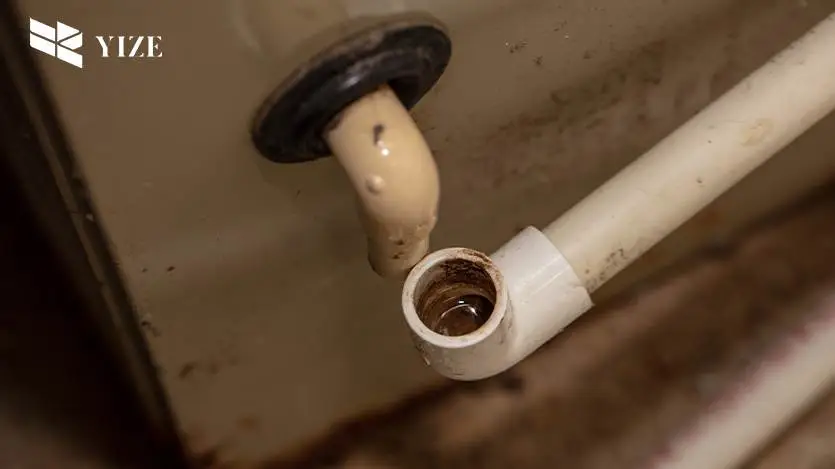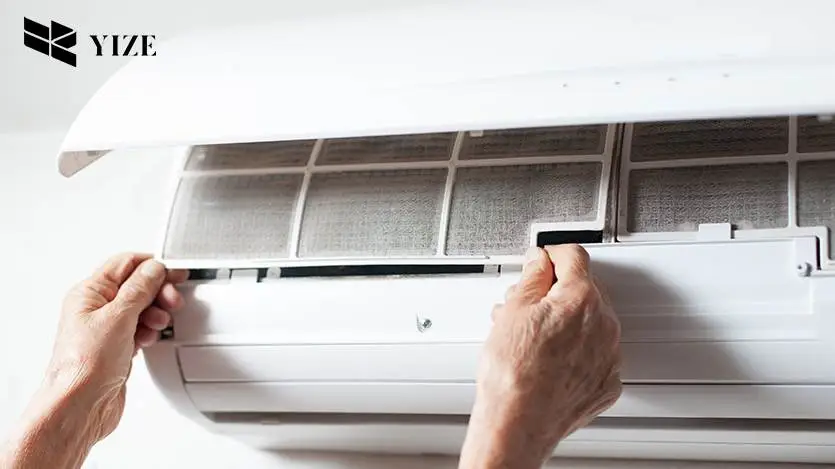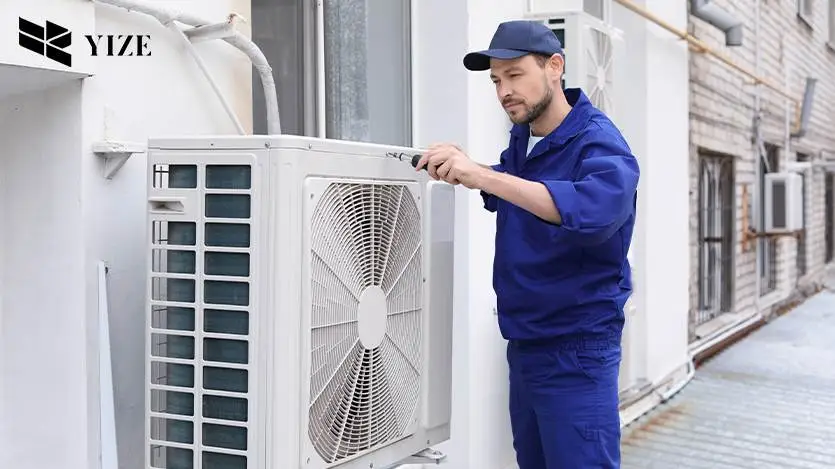How to clean the AC drain line during peak hours? Well, the answer is as simple as a bottle of vinegar. You heard right; vinegar has always been known as a magical elixir. Moreover, it is the superhero of household cleaning. That’s why you should use it to keep your AC position in tip-top shape. Let’s delve deeper into how to unclog AC drain lines with vinegar.

Signs of Clogged Drain Lines of Air Conditioner
Here are a few signs of clogged drain lines that you should look out for:
- Musty odors: If the drain line is clogged, it can accumulate stagnant water in the drain pan and evaporator coil. This can lead to a musty or unpleasant odor coming from the AC system.
- Strange noises: A blocked drain line can cause strange noises from your cooling system. You may hear gurgling or bubbling sounds. It indicates that water is not flowing through the drain line as it should.
- Water backup: The most common sign of a clogged drain line is water backup. Water can be inspected in your AC system or around the indoor unit. You may notice water pooling around your AC unit. It may also cause discoloration and wet walls.
How to Clean AC Drain Line using vinegar like a Pro?
Some routine cleaning is the best way to avoid reaching a situation of a blocked drainage system. If you have reached this dilemma, then vinegar is the solution. Yeah, vinegar is one of the easiest ways to unclog AC drain lines. It’s even useful in clearing the shower drain.

You only need to pour a ¼ cup of distilled vinegar down your air conditioner’s drain line. It will kill bacteria, fungi, algae, mildew, little plants, and mold. Its potential properties work effectively against these microorganisms. Likewise, it’s pro in clearing clogs and buildups. It’s recommended to clean the drain line every month.
Steps to Clean Condensate Line with Vinegar
Here is a step-by-step guide to cleaning and unclogging ac drain lines. You will get optimal performance of your AC by applying these steps. Let’s begin!
- Switch off your air conditioning system. Both the breaker and the thermostat should be off to ensure safety.
- Now find where that condensate drain line is. Tracking down the sneaky little drain line is the main step. The condensate drain line/pipe is a PVC pipe that emerges from the wall of the house. It is usually present near the outdoor AC unit.
- Locate the access point for the drain line. In most cases, the drain line features a T-shaped vent with a removable cap or cover. Peer inside to inspect for any buildup or clogs.
- Now it’s time to flush the AC drain line with vinegar. Pour ¼ cup of distilled vinegar into the vent opening. You can utilize a funnel or a turkey baster until it is full.
- Give the vinegar some “me time” to work its magic for half an hour.
- Rinse with water and observe the flow to check for proper drainage.
- Keep on repeating the process until the water runs clear.
Finally, you can clean the drain line without broken pipes or anything worse.
More Ideas to Maintain a Clean AC Drain Line:
Here are more ideas and tips to flush and maintain an ac drain line.
Change the air filter regularly:
It prevents dust and debris from accumulating in the AC unit. Also, keep the area around the AC unit clean and debris-free.

Regular maintenance:
Schedule regular maintenance checks with a professional HVAC technician. They can ensure the AC unit is functioning well. It also prevents any potential issues.

Install a condensate pump:
Suppose your AC unit is in a basement or crawlspace. Now, it is necessary to install a condensate pump to pump the water out of the drain line. This can help prevent clogs and water backup.
Use a wet/dry vacuum:
A wet or dry vacuum is the best option to clean out the drain line. So, attach the vacuum to the end of the drain line. Now turn it on to suck out any debris.

Use a drain pan tablet:
A drain pan tablet can help prevent bacteria buildup. You can drop the tablet into the drain pan and let it dissolve.
Keep the drain line insulated:
Insulating the drain line can help prevent condensation from forming on the outside of the pipe. It can lead to mold growth and other issues. Insulation can also help prevent the drain line from freezing in colder temperatures.
Following these ideas, you can keep your AC system in optimal condition.
FAQs
Can I put too much vinegar in my ac?
No. You cannot put too much vinegar in your air conditioner. It can erode. It’s risky to add too much vinegar. However, it would be better if you kept in mind the following things when using vinegar:
- Use distilled white vinegar.
- Use a small amount of vinegar.
- Rinse after using it.
- Consider professional cleaning when using vinegar.
Hence, using it properly and avoiding using it too much is important.
Where do I add vinegar to my ac pipeline?
You must locate the AC drain line’s access point to add vinegar. The access point is a PVC pipe. It is located near the outdoor unit of your AC system.
Can we use apple cider vinegar to clean ac drain line?
No. Using apple cider vinegar to clean your AC drain line is not recommended. Apple cider vinegar is more acidic than distilled white vinegar. It may also contain additives that can harm your AC system. Remember, distilled white vinegar is the recommended type of vinegar for this task.
How often to put vinegar in ac?
It is generally recommended to put vinegar in your AC once a year. You can use it more frequently if you notice clogs or water backup. Cleaning it every month can cause excessive acidity buildup. Furthermore, it may damage your AC system.
Wrapping up – A Clean AC Means a Healthy AC
Air conditioner drain line clogs are the biggest threat to a healthy AC. The only way is to turn to our superpower, which is vinegar. But try to remove it before your AC unit clogs up.
You have enough time to finish cleaning the line. Start by ridding yourself of your bad habit and immediately perform this important task. You can remove a clogged drain line using the above-mentioned simple procedure.

For more information and solutions, you can visit YZDrain‘s official website to get professional sanitary ware services. It may include linear shower drains, faucets, washroom accessories, washbasins, etc.
Finally, please ask us in the comment section if you have any questions. We will answer all your questions to the best of our ability. Thanks for the Read!
